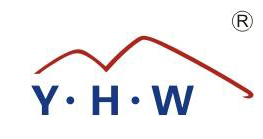The design of roof metal flat tiles plays a crucial role in ensuring efficient water drainage and preventing issues such as water pooling or leakage. Several key design features and principles contribute to the effectiveness of metal flat tiles in managing water flow:
1. Tile Interlocking System:
Overlapping Design: Metal flat tiles are typically designed with interlocking edges that create seams or overlaps between adjacent tiles. This overlapping system ensures that water flows smoothly over the tiles, following the natural slope of the roof. The interlocks help prevent water from seeping under the tiles and reaching the underlying structure, which can lead to leaks.
Seamless Water Flow: The interlocking mechanism allows water to flow down the roof in a controlled manner, directing it towards gutters and downspouts. This reduces the risk of water pooling or stagnating on the surface, which can lead to corrosion, mold, or leaks.
2. Slope and Pitch Considerations:
Minimum Roof Pitch: Metal flat tiles are typically designed for roofs with a minimum pitch (slope) to facilitate water runoff. The slope helps direct water downwards and prevents it from collecting on the surface. A steeper pitch improves drainage, while a low-slope roof requires special attention to detailing and flashing to ensure proper water movement.
Controlled Water Flow: The design of the tiles and the roof pitch ensures that water is channeled efficiently into the drainage system. When installed at the correct angle, the tiles form a continuous flow path for rainwater, preventing it from pooling or causing pressure points that could lead to leaks.
3. Waterproof Coatings and Seals:
Protective Coatings: Many metal flat tiles are coated with protective finishes such as galvanized, galvalume, or polymer coatings that enhance their resistance to corrosion and improve water resistance. These coatings help prevent water penetration into the metal, which could lead to rusting or damage over time.
Gaskets and Seals: The edges of metal flat tiles are often fitted with gaskets or seals that ensure a watertight connection between tiles. These seals prevent water from entering through gaps, further improving the roof's ability to prevent leaks.
4. Raised Rib or Profiled Design:
Ribbed or Embossed Profiles: Some metal flat tiles feature a ribbed or profiled design, which creates raised channels that allow water to flow more easily over the surface. These raised profiles direct water along specific paths, reducing the chances of it pooling in low spots or areas where the flow might be obstructed.
Increased Drainage Efficiency: The design of these profiles enhances the drainage efficiency of the roof, particularly during heavy rainfall, as they help water flow rapidly toward the gutters.

5. Efficient Flashing Systems:
Edge and Ridge Flashing: Proper flashing at the roof edges, ridges, valleys, and around features like chimneys or vents is critical in preventing water from seeping under the tiles. Flashing creates a barrier that directs water to flow over the roof and into the gutters, rather than pooling or penetrating under the tiles.
Customizable Flashing: Flashing can be designed to fit the specific geometry of the metal flat tiles, ensuring that it works in tandem with the tile’s design to channel water effectively.
6. Gutter and Downspout Integration:
Directing Water to Gutters: Metal flat tiles are designed to efficiently channel water toward the roof’s gutter system. Gutters are strategically placed at the eaves of the roof to collect the water that runs off the tiles. Downspouts then carry the water away from the building, preventing accumulation at the base of the roof.
Efficient Drainage Systems: The integration of gutters and downspouts ensures that water is effectively removed from the roof, avoiding issues like pooling or water damage to the building’s structure.
7. Prevention of Water Pooling in Low Areas:
Waterproofing Flashing in Valleys: Roofs with valleys (where two roof slopes meet) are more prone to water pooling. To address this, metal flat tiles are designed with specific valley flashing that directs water away from the intersection, preventing pooling in these low spots.
Proper Tile Installation: Careful installation of metal flat tiles, with accurate alignment and proper spacing, helps avoid water accumulation in low areas of the roof. The tiles are arranged to ensure that water flows uniformly and does not get trapped at the joints or edges.
8. Venting and Moisture Control:
Ventilation: Metal flat tiles are often used with an integrated roof ventilation system that allows moisture to escape from the attic or under-roof space. Proper ventilation helps prevent the buildup of condensation, which can lead to mold growth and water damage.
Breathable Membranes: In some cases, a breathable membrane is used beneath the metal tiles to help control moisture levels within the roof structure. This membrane allows vapor to escape while preventing water from infiltrating the roof.
9. Water Channeling Design:
Curved or Angled Edges: Some metal flat tiles have edges that are slightly curved or angled to promote water flow away from the surface. This helps direct water toward the designated drainage areas and prevents water from getting trapped on the roof.
Contoured Tile Surface: In addition to the interlocking system, the surface of the tiles may be contoured to guide water flow in a specific direction, reducing the likelihood of standing water.




 English
English русский
русский Español
Español عربى
عربى















